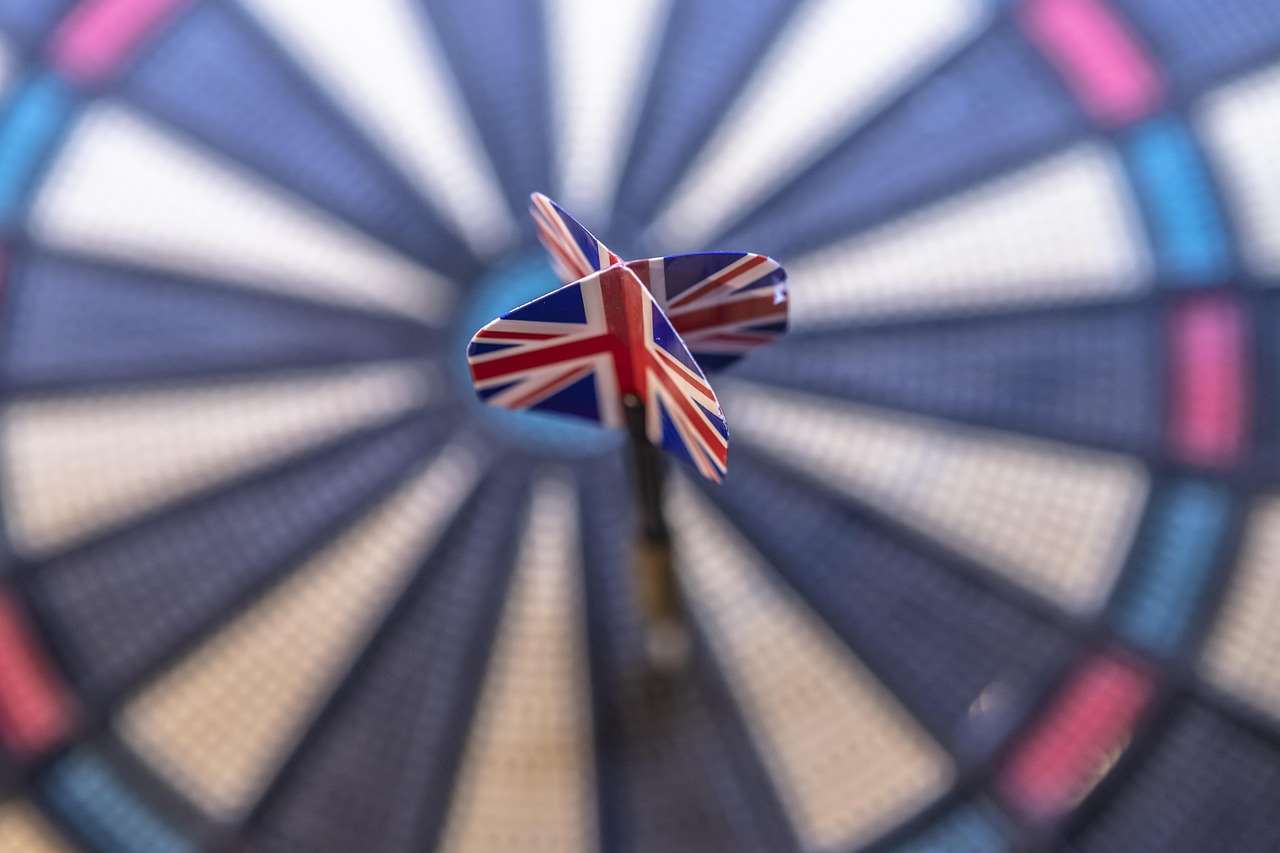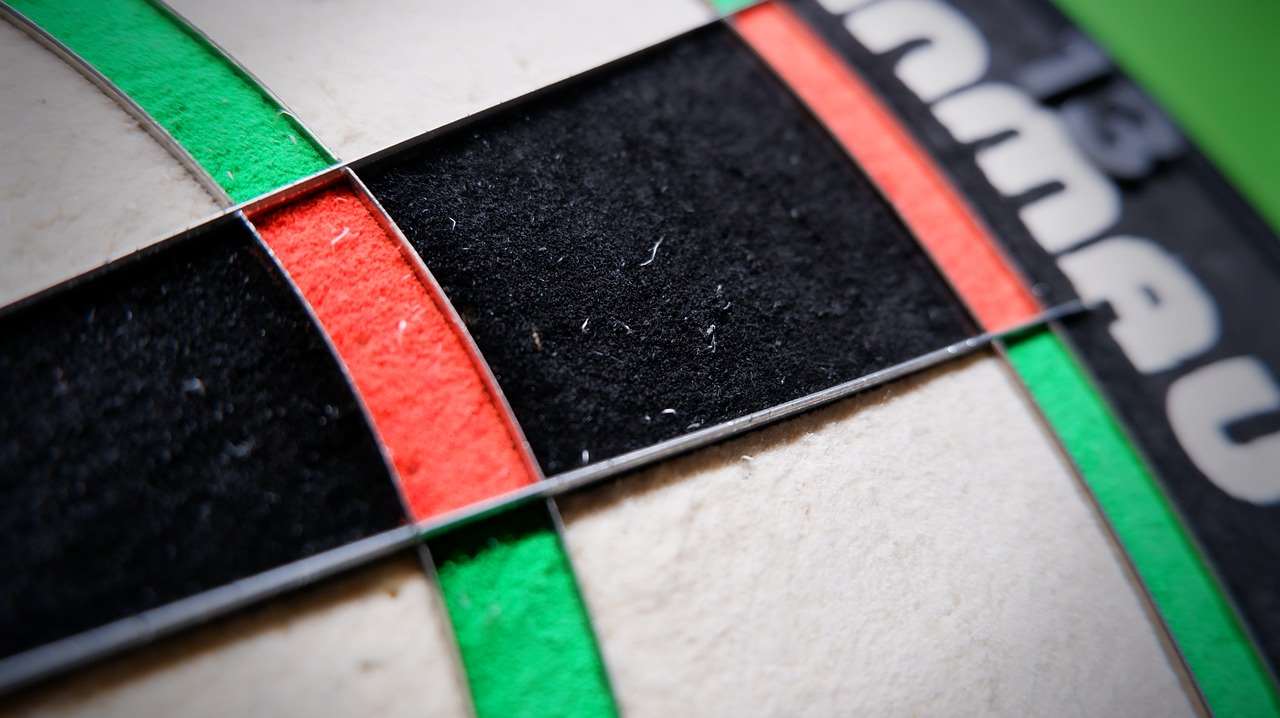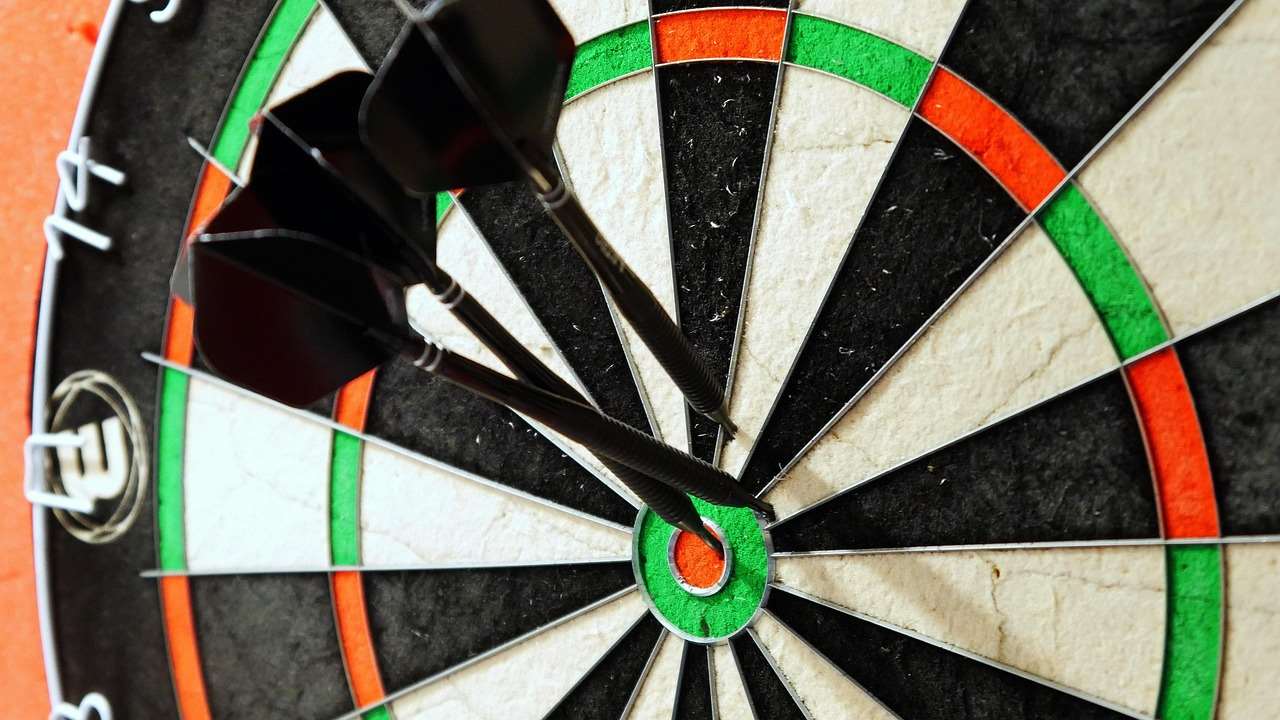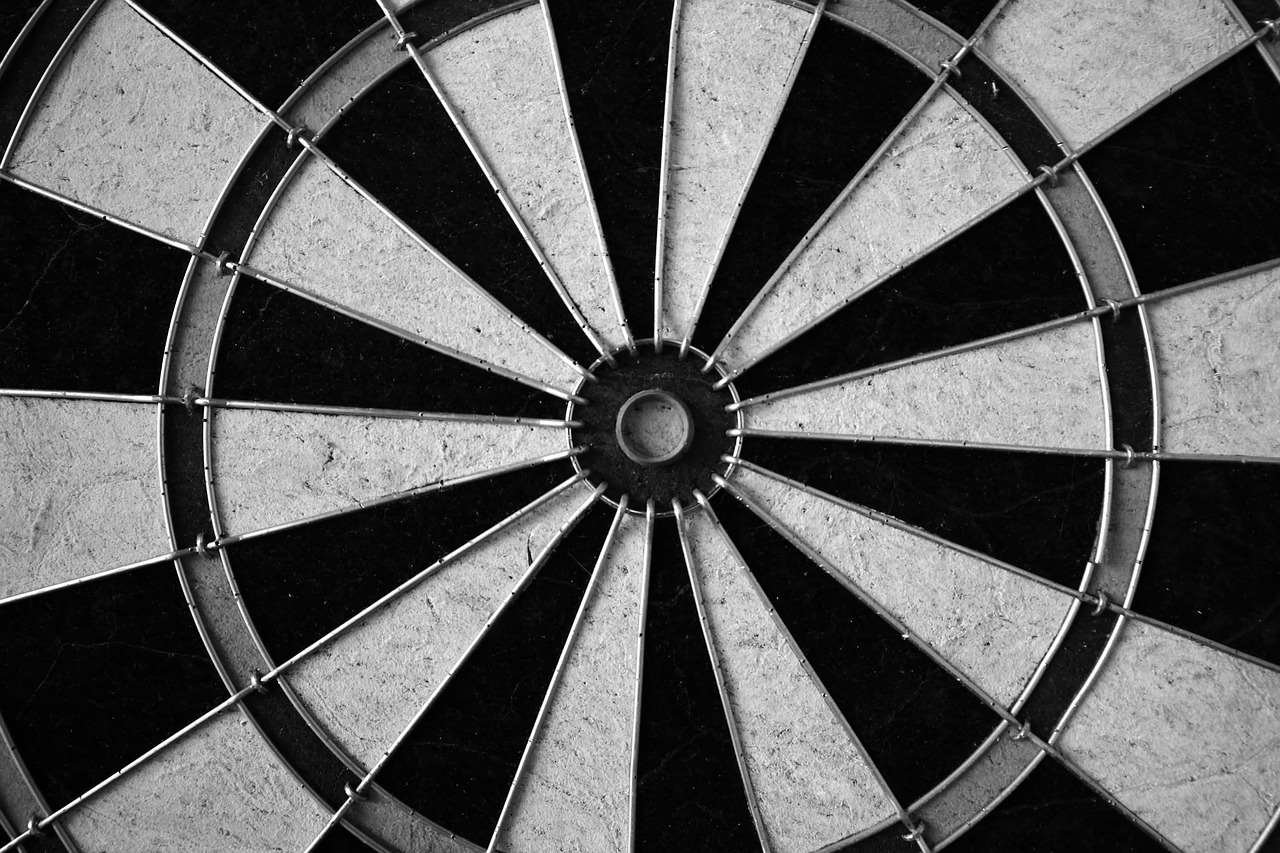Want to enjoy a game of darts at home? The key is knowing how to put up a dartboard correctly to ensure both safety and accurate gameplay. This article will guide you through the process, from choosing the right location and gathering the necessary tools, to securely mounting your dartboard and marking the official throwing line.
⚠️ Still Using Pen & Paper (or a Chalkboard)?! ⚠️
Step into the future! The Dart Counter App handles all the scoring, suggests checkouts, and tracks your stats automatically. It's easier than you think!
Try the Smart Dart Counter App FREE!Ready for an upgrade? Click above!
Choosing the Perfect Location for Your Dartboard
Before you even think about hammering a nail, selecting the right spot for your dartboard is crucial. Consider these factors:
- Space: You’ll need ample space, not just for the dartboard itself, but also for players to stand comfortably and throw their darts. A good rule of thumb is to have at least 8-10 feet of clear space in front of the board.
- Wall Material: Ideally, you want a solid wall that can withstand the impact of errant darts. Brick or concrete is great, but if you have drywall, consider reinforcing it or using a dartboard surround to protect the wall. This can be a crucial part of learning how to put up a dartboard safely and effectively.
- Lighting: Good lighting is essential for accurate aiming. Position your dartboard in a well-lit area, or consider adding dedicated dartboard lighting.
- Safety: Ensure there are no obstructions, such as furniture or doorways, in the throwing path. Keep children and pets away from the playing area when darts are in use.
Avoid placing your dartboard near high-traffic areas or where someone might accidentally walk in front of a thrower. Remember, safety first! You might even consider a dartboard door mount if space is truly limited, but ensure the door is sturdy and won’t move during play.

Gathering the Necessary Tools and Materials
Having the right tools makes how to put up a dartboard much easier and safer. Here’s what you’ll need:
- Dartboard: Obviously! Choose a high-quality dartboard made from sisal fibers for durability.
- Measuring Tape: For accurate placement of the dartboard and throwing line.
- Pencil: To mark measurements on the wall.
- Level: To ensure the dartboard is perfectly vertical.
- Drill and Screws: To securely mount the dartboard (if needed, depending on the mounting system).
- Dartboard Surround (Optional): To protect the wall from stray darts.
- Wall Anchor (If needed): If the wall is drywall and you can’t find a stud.
- Stud Finder: Locating a stud provides the most secure mounting point.
Consider investing in a dartboard cabinet, which provides a dedicated space for your dartboard, protects the wall, and often includes scoreboards. Using a free darts checkout calculator can also improve your game, but first, let’s get the board up!
The Official Dartboard Height and Throwing Distance (Oche)
Adhering to official regulations ensures fair play and the best darting experience. Here are the key measurements to remember:
- Dartboard Height: The center of the bullseye should be exactly 5 feet 8 inches (1.73 meters) from the floor.
- Throwing Distance (Oche): The front of the oche (throwing line) should be 7 feet 9 1/4 inches (2.37 meters) from the face of the dartboard.
- Diagonal Distance: The distance from the bullseye to the oche is 9 feet 7 3/8 inches (2.93 meters). While you likely won’t measure this directly, it’s a useful check.
These measurements are standard for both steel-tip and soft-tip darts. Use your measuring tape and pencil to accurately mark these distances on your wall and floor. Precision is key when determining how to put up a dartboard for optimal play.

Marking the Bullseye and Oche
Once you’ve chosen your location, it’s time to get precise with your measurements. Use these steps to accurately mark the bullseye and oche:
- Measure the Height: Using your measuring tape, measure 5 feet 8 inches from the floor and mark the spot on the wall with your pencil. This is where the center of the bullseye will be.
- Use a Level: Ensure the mark is level before proceeding. A slightly tilted dartboard can significantly affect your accuracy.
- Mark the Oche: Measure 7 feet 9 1/4 inches from the wall (from the face of where the dartboard will hang) and mark the throwing line on the floor. You can use tape or a piece of wood to create a clear oche.
Double-check your measurements before proceeding. Accurate measurements are paramount when considering how to put up a dartboard that meets regulation standards.
Mounting Your Dartboard: Step-by-Step Guide
Now comes the actual mounting process. Most dartboards come with a mounting bracket system. Here’s a general guide, but always refer to the instructions included with your specific dartboard:
- Locate a Stud (Recommended): Use a stud finder to locate a wall stud behind the bullseye mark. Screwing directly into a stud provides the most secure hold.
- Install the Mounting Bracket: Attach the mounting bracket to the wall, aligning it with your bullseye mark. If you’ve found a stud, use screws to secure it directly to the stud. If not, use wall anchors for added support.
- Attach the Dartboard: Most dartboards have a rotating ring on the back. Loosen this ring and align the dartboard with the mounted bracket. Then, tighten the ring to secure the dartboard in place.
- Ensure Levelness: Use your level to check that the dartboard is perfectly vertical. Make any necessary adjustments by rotating the board slightly.
Remember to choose the right screws for your wall type. For drywall, use drywall screws and anchors. For brick or concrete, use masonry screws and a hammer drill. Take your time and be careful to avoid damaging the wall. Correct mounting is essential to **how to put up a dartboard** so that it is stable and safe.

Securing the Dartboard and Protecting Your Wall
Even with a secure mounting bracket, it’s wise to take extra precautions to protect your wall. Consider these options:
- Dartboard Surround: A dartboard surround is a padded ring that surrounds the dartboard, catching stray darts and preventing them from damaging the wall. This is a worthwhile investment, especially for beginners.
- Backboard: A large piece of plywood or other material placed behind the dartboard can provide additional protection. You can paint or decorate the backboard to match your room’s decor.
- Regular Maintenance: Periodically check the mounting bracket and screws to ensure they are still tight. A loose dartboard is more likely to fall and damage the wall.
Taking these steps can save you from costly repairs down the road. Protecting your wall is an important aspect of how to put up a dartboard for long-term enjoyment.
Troubleshooting Common Dartboard Mounting Problems
Even with careful planning, you might encounter some issues when mounting your dartboard. Here are some common problems and how to solve them:
- Dartboard Won’t Stay Level: If your dartboard keeps tilting, make sure the mounting bracket is securely attached to the wall and that the dartboard’s rotating ring is tightened properly. You may also need to use shims to level the board if the wall is uneven.
- Screws Keep Coming Loose: If you’re using drywall anchors, ensure they are the correct size for your screws and wall type. You may also need to use heavier-duty anchors. The ideal solution is always to mount to a stud.
- Dartboard Wobbles: A wobbly dartboard indicates that the mounting bracket is not flush with the wall. Try adding shims behind the bracket to create a more stable surface.
Don’t be afraid to experiment and try different solutions until you find what works best for your situation. Sometimes Darts scorekeeper app can help you keep track of adjustments that are needed for optimal play!

Essential Tips for Dartboard Maintenance and Longevity
Once your dartboard is up, proper maintenance is key to keeping it in good condition for years to come. Here are some tips:
- Rotate the Dartboard Regularly: Dartboards wear out unevenly as players tend to aim for the same sections. Rotating the dartboard periodically distributes the wear and tear, extending its lifespan.
- Keep the Dartboard Dry: Moisture can damage the sisal fibers of the dartboard. Avoid placing it in humid environments and wipe it down with a dry cloth if it gets wet.
- Remove Broken Dart Tips: Broken dart tips embedded in the dartboard can damage the fibers and make it difficult to throw accurately. Use a dartboard tool to carefully remove any broken tips.
- Avoid Using Dull Darts: Dull darts can damage the dartboard fibers. Keep your dart tips sharp by using a dart sharpener.
Regular maintenance will ensure your dartboard provides years of enjoyment. It’s a small investment of time that pays off in the long run. You might also consider browsing a darts online store for replacement parts and accessories.
Safety First: Dartboard Rules and Etiquette
Darts can be a fun and engaging game, but it’s essential to prioritize safety. Here are some basic rules and etiquette to follow:
- Never Throw Darts When Someone is in Front of the Board: This is the most important rule. Always wait until the throwing area is clear before throwing your darts.
- Stand Behind the Oche: Always throw your darts from behind the throwing line.
- Don’t Distract the Thrower: Avoid talking or making noise while someone is throwing.
- Retrieve Your Darts Carefully: Approach the dartboard cautiously and avoid bumping into other players.
- Use Proper Darting Technique: Learn the proper throwing technique to minimize the risk of injury.
By following these simple rules, you can ensure that everyone enjoys a safe and fun game of darts. Playing a darts game in spanish may require a little translation but the safety rules remain universal.

Beyond the Basics: Taking Your Dart Game to the Next Level
Once you’ve mastered the basics of how to put up a dartboard and are comfortable with the rules, you can start exploring ways to improve your game. Consider these options:
- Join a Dart League: Joining a dart league is a great way to meet other players, improve your skills, and compete in a friendly environment.
- Practice Regularly: The more you practice, the better you’ll become. Set aside some time each day or week to hone your darting skills.
- Watch Professional Darts: Watching professional dart players can provide valuable insights into technique and strategy.
- Experiment with Different Darts and Flights: Different darts and flights can affect your throwing style and accuracy. Experiment to find what works best for you. You might even try mission flights darts.
- Use a Darts Scorekeeping App: Easily track your scores, stats, and progress.
With dedication and practice, you can take your dart game to new heights. Whether you’re playing for fun or competing professionally, the possibilities are endless.
How To Put Up A Dartboard: Final Thoughts
Mastering how to put up a dartboard is the first step to enjoying countless hours of fun and competition. By following these guidelines, you can ensure that your dartboard is securely mounted, properly positioned, and ready for action. Remember to prioritize safety, practice regularly, and most importantly, have fun! Now that you know how to put up a dartboard, gather your friends, grab your darts, and get ready to hit that bullseye! Consider this your call to action: get your dartboard set up today and start enjoying the game!
Hi, I’m Dieter, and I created Dartcounter (Dartcounterapp.com). My motivation wasn’t being a darts expert – quite the opposite! When I first started playing, I loved the game but found keeping accurate scores and tracking stats difficult and distracting.
I figured I couldn’t be the only one struggling with this. So, I decided to build a solution: an easy-to-use application that everyone, no matter their experience level, could use to manage scoring effortlessly.
My goal for Dartcounter was simple: let the app handle the numbers – the scoring, the averages, the stats, even checkout suggestions – so players could focus purely on their throw and enjoying the game. It began as a way to solve my own beginner’s problem, and I’m thrilled it has grown into a helpful tool for the wider darts community.